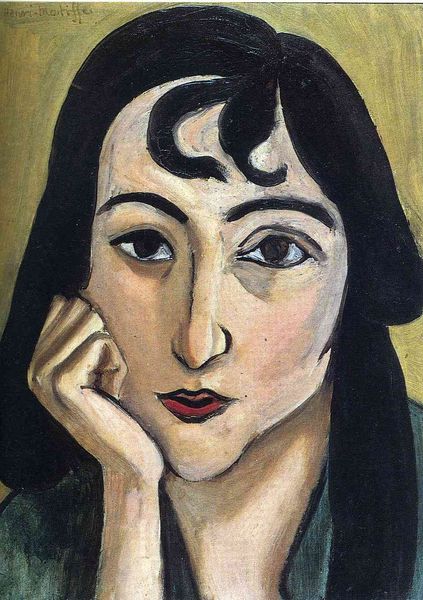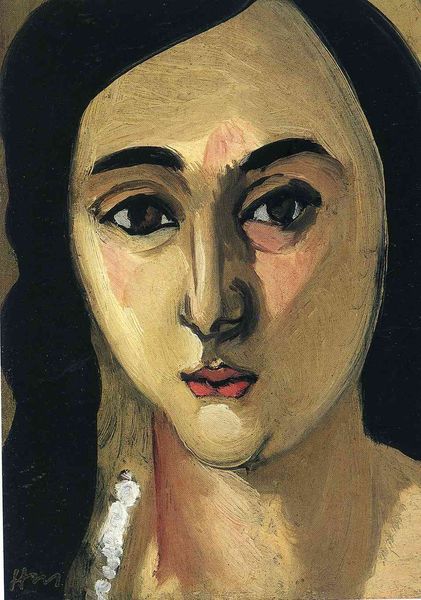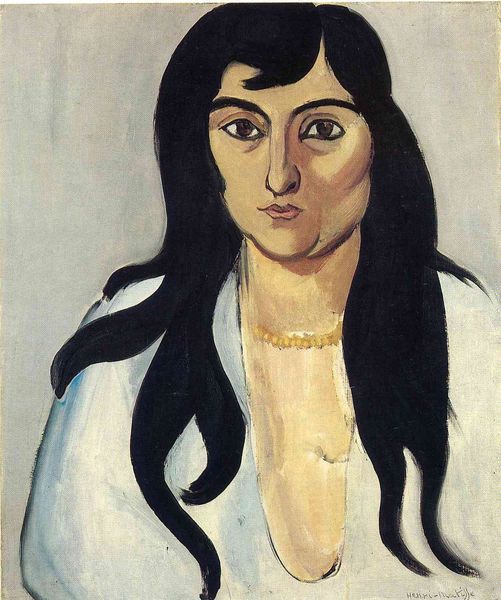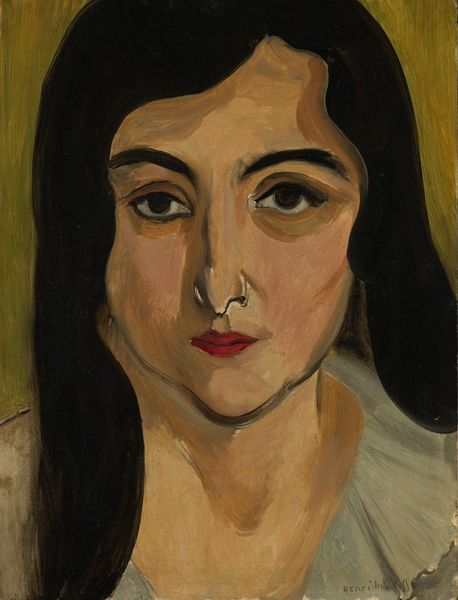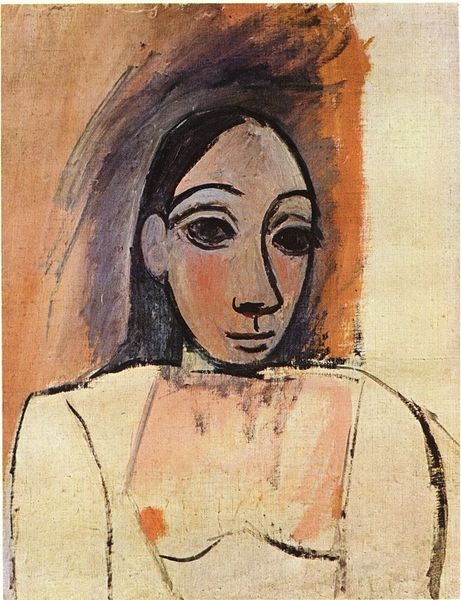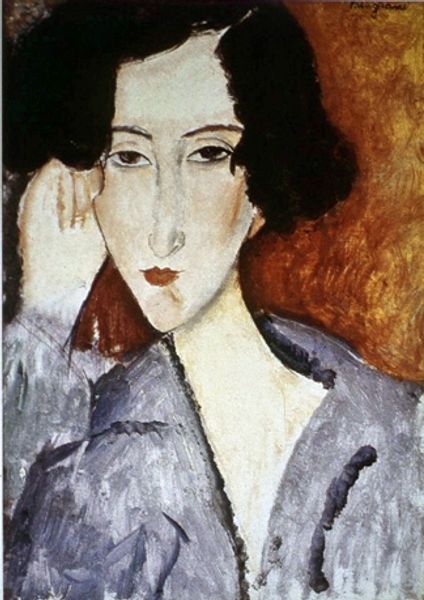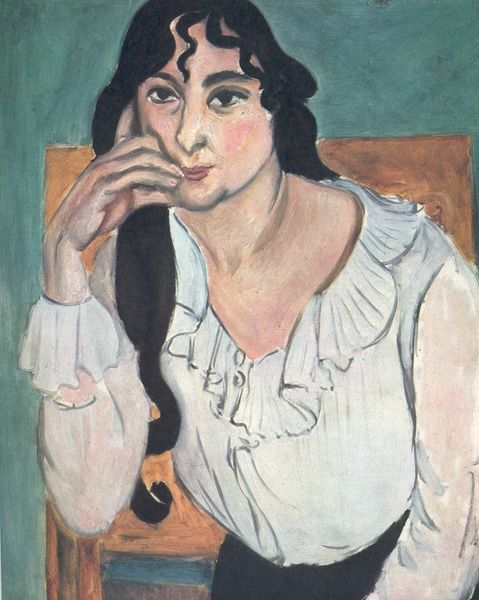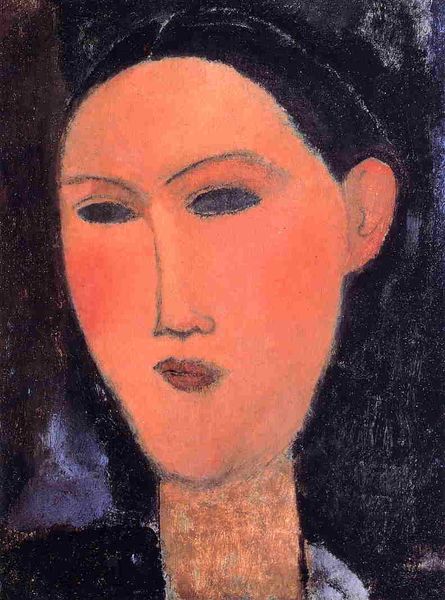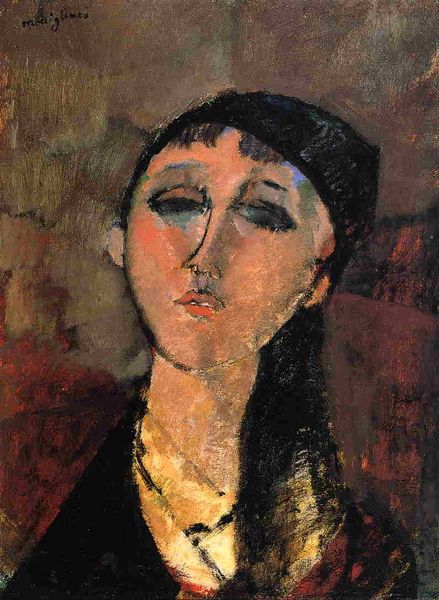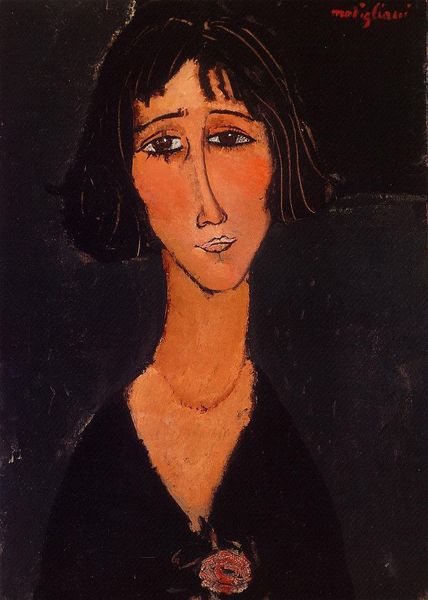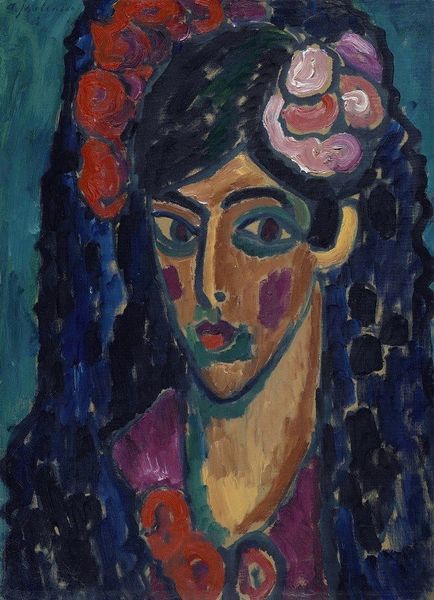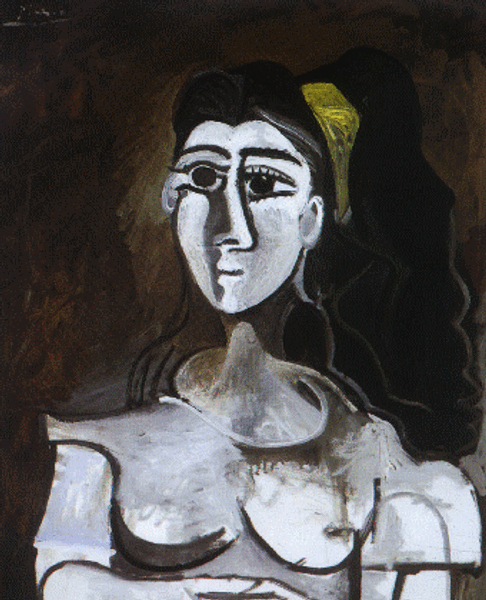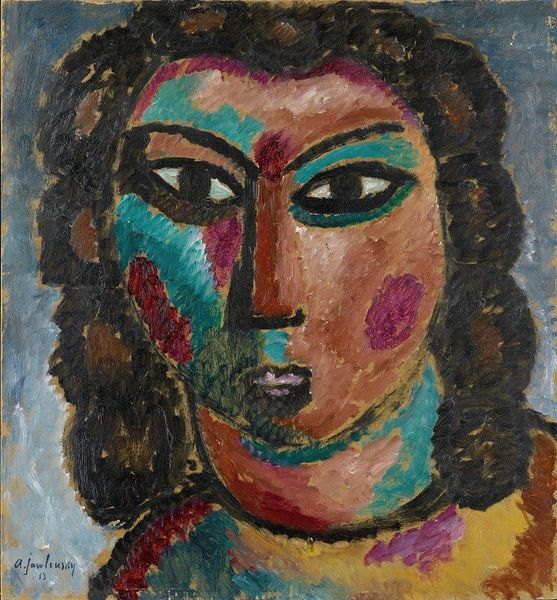
Copyright: Public domain US
Curator: Well, look at this piece, Laurette with Long Locks, an oil painting by Henri Matisse, completed around 1917. The artist brings into focus an exploration of the figure through what appears to be simple, yet complex, rendering. What strikes you immediately? Editor: Her gaze feels intense, almost confrontational. And the simplified forms... there’s a raw energy there. It reminds me of questions around female representation, perhaps stripping away conventional beauty ideals to reveal something more… substantial. Curator: Exactly! Considering the political climate of 1917, amidst the First World War, the intimacy and directness here is quite striking. This painting moves beyond merely depicting Laurette; it is also making a statement about the individual and the modern human experience. Think about Fauvism. Matisse takes a reductive path with form. He does away with details and creates a face using the bare minimum to communicate likeness and achieve visual appeal. Editor: Absolutely. It's intriguing how he employs this reduction—how it interacts with broader power dynamics. Consider, for example, the art world’s male gaze… Did this stripping-down of detail challenge or reinforce existing structures of how women were seen and perceived in society at the time? I think of Laura Mulvey. And how might this portrayal have been a conscious resistance? Curator: It's likely that Matisse engaged in active dialogues within his social framework and that he translated some of these ideologies in this portraiture, or not. However, the simplicity itself disrupts traditional hierarchies. It makes the artwork approachable and less bound by elitist or academic perceptions and dogmas. Editor: So, democratizing the art experience, in a way? Fascinating how such a seemingly straightforward portrait can open up these avenues of inquiry. Thanks for shedding light on Matisse’s place in that discourse! Curator: It is a privilege to explore this portrait with you and connect its potential impact on how portraiture developed at that time, within different audiences. Thank you.
Comments
No comments
Be the first to comment and join the conversation on the ultimate creative platform.
